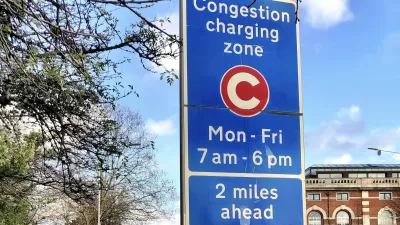Independent cultural institutions provide so much of what make cities world class, and they are a big part of the appeal for people who choose to live in highly urbanized areas. These days, cultural institutions are having a hard time affording rent.
London recently released a Cultural Infrastructure Plan, designed to protect and grow cultural facilities as the cost of real estate in the city drive institutions away from the city.
From the website promoting the new plan:
London is a city recognised as the global capital for arts and culture. Our theatres, music venues, museums and galleries are renowned across the world. Our creative industries are vital to London’s success and the recording studios, rehearsal spaces, artists' workspaces are the engine room that is responsible for generating £52 billion per year.
However, there has been a worrying decline in London’s cultural spaces, with the numbers of LGBT+ venues and grassroots music venues stabilising in the last year following a decade of decline.
London also released a Cultural Infrastructure Toolbox and a Cultural Infrastructure Map to accompany the new plan.
Following the announcement of London's plan, Jonathan Bowles and Eli Dvorkin write of the need for New York City to model a similar plan on the work done by London to protect its cultural institutions.
"The echoes of New York City are unmistakable: From escalating rents and operating costs to licensing and funding restrictions, the dance studios, music venues, theaters, workshops, and even skateparks that make London a global cultural capital are under unprecedented pressure," wrotes Bowles and Dvorkin. "Just like in London, artists and arts organizations provide the key building blocks of New York City’s broader creative economy, which supports roughly 300,000 jobs across the five boroughs. But there’s another, more painful, similarity: New York City has likewise been losing art spaces, affordable studios, and grassroots venues at a rapid clip."
As noted by Bowles and Dvorkin, the Center for an Urban Future in 2015 published a report called "Creative New York," that documented the decline of cultural institutions in the city of New York.
FULL STORY: OP-ED London Calling: New York Should Take a Cue from London Mayor Sadiq Khan’s Cultural Infrastructure Plan

Alabama: Trump Terminates Settlements for Black Communities Harmed By Raw Sewage
Trump deemed the landmark civil rights agreement “illegal DEI and environmental justice policy.”

Planetizen Federal Action Tracker
A weekly monitor of how Trump’s orders and actions are impacting planners and planning in America.

The 120 Year Old Tiny Home Villages That Sheltered San Francisco’s Earthquake Refugees
More than a century ago, San Francisco mobilized to house thousands of residents displaced by the 1906 earthquake. Could their strategy offer a model for the present?

Ken Jennings Launches Transit Web Series
The Jeopardy champ wants you to ride public transit.

BLM To Rescind Public Lands Rule
The change will downgrade conservation, once again putting federal land at risk for mining and other extractive uses.

Indy Neighborhood Group Builds Temporary Multi-Use Path
Community members, aided in part by funding from the city, repurposed a vehicle lane to create a protected bike and pedestrian path for the summer season.
Urban Design for Planners 1: Software Tools
This six-course series explores essential urban design concepts using open source software and equips planners with the tools they need to participate fully in the urban design process.
Planning for Universal Design
Learn the tools for implementing Universal Design in planning regulations.
Clanton & Associates, Inc.
Jessamine County Fiscal Court
Institute for Housing and Urban Development Studies (IHS)
City of Grandview
Harvard GSD Executive Education
Toledo-Lucas County Plan Commissions
Salt Lake City
NYU Wagner Graduate School of Public Service





























